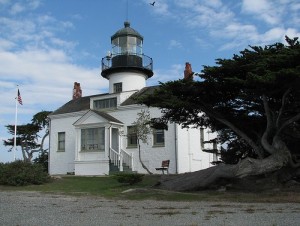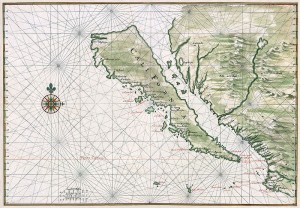I started reading up on California history last year because my son, Kazu, was entering fourth grade, and that’s what fourth graders study. Next year, the study US History from the arrival of the first Europeans to 1850, the brink of the Civil War. Anticipating that eventuality, I thought I’d get a leg up. But instead of reading a standard text, I happened to pick up a copy of Howard Zinn’s A People’s History of the United States for a buck at the local Friends of the Library sale. It’s a book I’ve always been vaguely interested in, and now I have the perfect excuse to read it. As the title suggests, it’s probably not standard reading in the fifth grade curriculum. It starts out with a rather damning account of the havoc wreaked by Columbus on the natives he met. He then states,
Thus began the history, five hundred years ago, of the European invasion of the Indian settlements in the Americas. That beginning . . . is conquest, slavery, death.
Which I find is exactly the same conclusion I reach on reading Bancroft, a far less revisionist historian. Simply reciting facts, giving chronologies, Bancroft almost inadvertently chronicles over and over again the depredations rained on native Californians by the conquering Spaniards. For instance:
In real or affected pity for the natives, the governor [Pedro Fages, in 1785] complained of excessive severity on the part of the missionaries toward their neophytes. Doubtless there were instances of cruelty, but not many could be cited in these early years.
Bancroft, 400. But in the footnote to this text, Bancroft states:
Putting neophytes in irons and forced labor very frequent in all the missions, and particularly at San Carlos [which, you will recall, was under the saintly Junipero Serra]. June 11, 1785 Fages writes to [Father] Noriega that the natives accuse him of beating them with chains for trifling faults, charges which he [Fages] has investigated and found to be true. Implores [Noriega] in the name of humanity and the king to change his course. Lieutenant Zuniga complained in 1788 that the natives of San Diego were overworked and too severely punished. Fages has seen [Father] Pena draw blood by pulling a boy’s ear, and natives accuse him of killing one of their number. An unsigned scrap of 1785 speaks of irregular conduct of a padre and objects to mode of chastisement.
I am sure Bancroft doesn’t mean this to be an exhaustive list of complaints. It omits, for example, the early episode at San Gabriel where a chief was beheaded and his head impaled on a spear and placed at the entrance to the compound. The chief had come to the mission and attacked a soldier who had raped the chief’s wife. It seems as though the natives didn’t even know they were bring conquered. Foreigners showed up, they welcomed them and fed them. They also stole from them, as they were inclined to do. And when things got unbearable, they attacked the Spanish.
There is a lot of story there, but we all know how it ends. I do wonder, as I’m reading Bancroft, whether the natives ever noticed that the first thing the Spanish did at every place they stopped was to build a fort. Seems like that should have been a hint.


